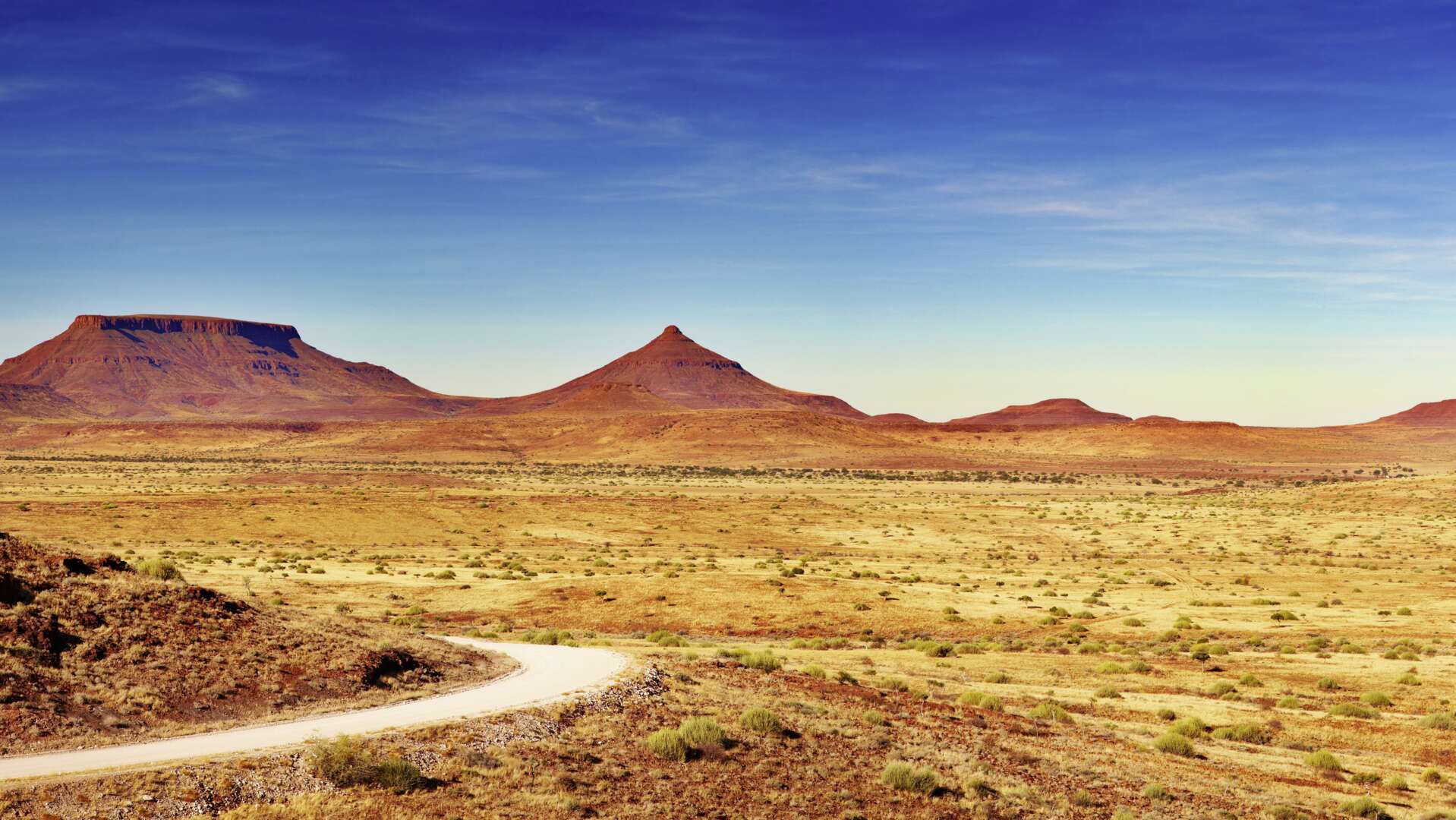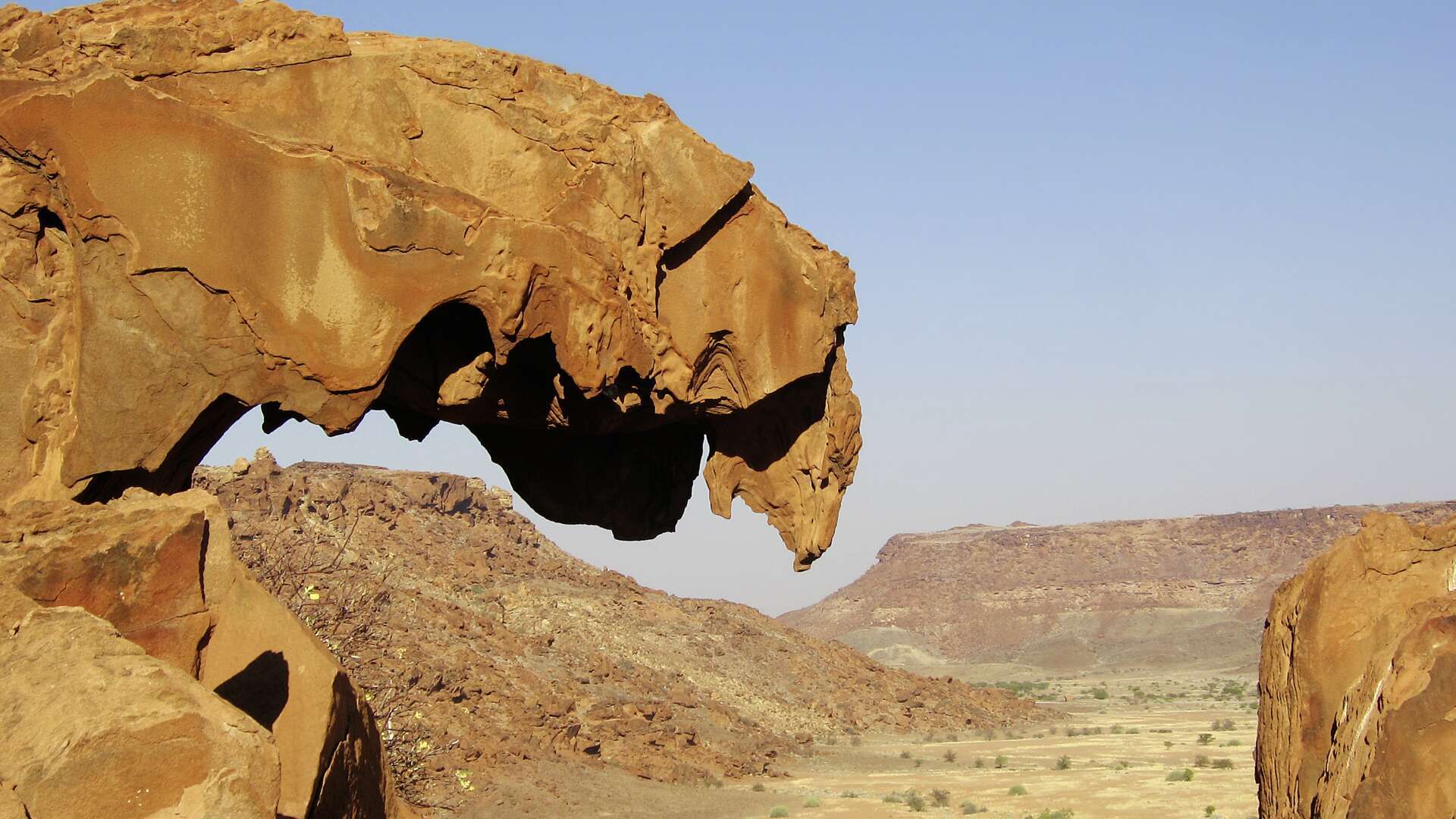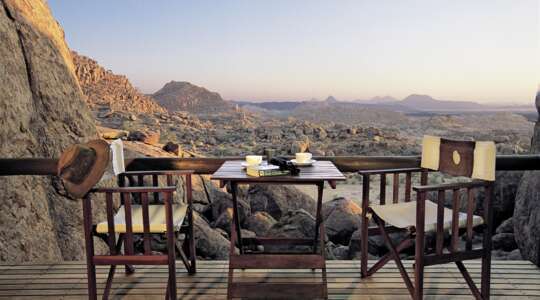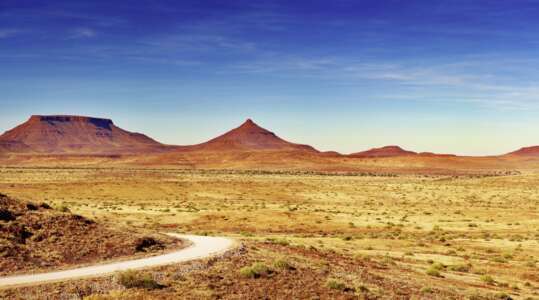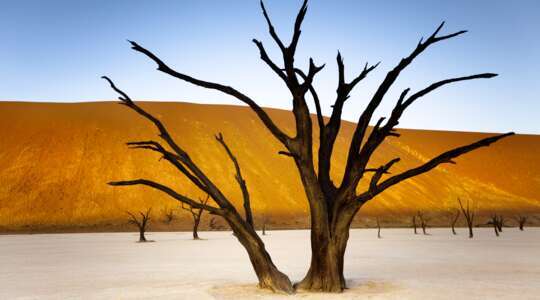Speak to one of our experts now about this offer
Call us on - 0800 092 4444
Or drop into your local Kuoni store to find out more
Speak to one of our experts now about this offer
Call us on - 0800 294 9710
Or drop into your local Kuoni store to find out more
Speak to one of our experts now about this offer
Call us on - 0800 294 9728
Or drop into your local Kuoni store to find out more
Welcome to Damaraland, where flat-topped mountain ranges crowd the horizon and prehistoric rock paintings decorate the burnt-orange landscape. In this vast wilderness of highlands, grasslands and gorges, desert-adapted animals roam through forests of bone-limbed petrified trees and dinosaur footprints are stamped into the dust. Namibia’s highest peak, Brandberg, known as Fire Mountain for its sunrise and sunset glow, attracts climbers from all over the planet, along with Spitzkoppe’s Matterhorn-shaped volcanic peak that looms 1,728 metres above the desert plains.
Come to Damaraland to peruse southern Africa’s most impressive rock art collection in the Twyfelfontein region. Protected as a UNESCO site, the open-air gallery features over 2,500 animal shapes and geometric designs carved over thousands of years by Namibia’s nomadic hunter-gatherers. The ancestors of these native people can be visited today, including the Damara, San and Himba tribes, who wear a thick ochre sunscreen and continue to live in the arid environment among geological wonders and wild animals.
Experience Damaraland’s desert delights with help from our Namibia gurus, who know the best lodges and experiences in Twyfelfontein.
Holidays in Damaraland
You may also like
Explore Damaraland: peaks, petroglyphs and desert elephants
Damaraland is unlike anywhere else in Namibia, home to table-topped peaks carved with ancient petroglyphs and dry river beds where desert elephants roam. Explore Damaraland’s highlights, starting with its collection of ancient rock art in Twyfelfontein, a UNESCO World Heritage Site. As Africa’s most extensive rock art collection, you can see over 2,500 animal shapes and geometric designs carved over thousands of years by Namibia’s native bushmen.
As you drive through Damaraland, your guide will point out its signature landmarks; geological formations carved by wind and sand over centuries. There’s a set of impressive dolerite pillars nick-named the organ pipes, a petrified forest of trees frozen in sediment over 200 million years ago and the Matterhorn-shaped volcanic peak, Spitzkoppe. Namibia’s highest mountain, Brandberg, is gorgeous at sunrise and sunset, when it appears to glow, earning itself the title Fire Mountain.
You may see Namibia’s desert elephants, who live in dry riverbeds such as the Huab, Hoarusib and Uniab. These ephemeral rivers flood during rains and are lined with vegetation like ana trees, a vital food source for elephants. Classed as endangered, only an estimated 150 desert elephants are now left in the wild. If you’re lucky enough to spot the elephants your guide will point out the unique adaptations that allow them to survive in the desert, including larger feet to stop them from sinking into the sand.
Sorry, your hotel is no longer available
Please check alternatives
-
{{item.body}}
-
{{item.body}}
Choose a departure date
{{store.searchDuration}} nights
Enter rooms & guests
Checking prices & availability

{{term}}, {{formattedDate}} for {{searchDuration}} nights
Destinations See all Destinations
HolidaysSee all Holidays
OffersSee all Offers
InspirationSee all inspiration
